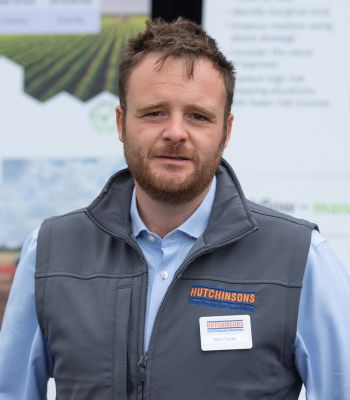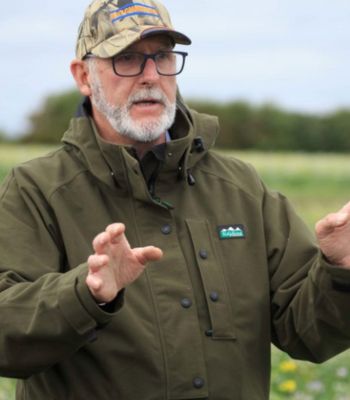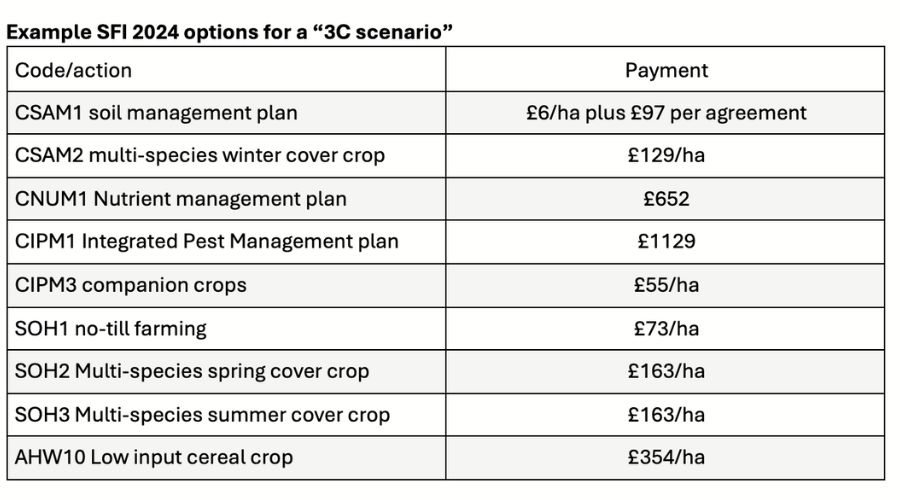Experts advise: Time to rethink rotations
23rd August 2024
The weather upset many cropping plans in 2023/24, with growers understandably keen to get back on track this autumn. However, as farm support shifts further towards crop-specific measures within the SFI, now is an ideal time to review rotation planning, Hutchinsons experts advise.


Hutchinsons farm business consultant, Will Foyle, said that the demise of Basic Payments and rollout of the Sustainable Farming Incentive (SFI) marks a “big milestone” for agriculture that could catalyse significant changes to some crop rotations.
“People often argue BPS is linked to crop production, but that’s not the case. Providing land is in good agricultural condition, farmers receive BPS regardless of crops grown or agronomic decisions made.
“That never incentivised rotational change or made anybody question whether rotations were correct within the bigger picture.
“In contrast, the SFI is the first scheme this century to incentivise good husbandry and crop production, and drive growers to think more about crops they select. Ignoring this and continuing doing what you’ve always done without question is wrong,” Mr Foyle continued.
Weighing-up options

Technical manager Dick Neale added that rotational choices are too often dictated by factors beyond growers’ control, notably the weather, or in the case of oilseed rape, crop failures caused by pests such as flea beetle.
He said: “People are sometimes ‘led by the tail’, getting forced down an alternative route because they’re not in control of rotational choices. There’s been a need to revisit rotations for several years, not just this season.”
The expert said that not every farm has to change its rotation just because new schemes are available, and doing so to “chase payments” is wrong.
“Every farm is different, and what works for one might not work for another,” says Mr Foyle. “The important thing is to look at the numbers carefully to see what’s working, what’s not, and build a sustainable rotation,” Mr Neale continued.
Breaks into rotation
Some farms that can grow a good range of commercial crops, including productive, reliable break crops, may not need to change, but equally, there are others where the “farm standard” may no longer be working.
In particular, farms growing predominantly cereals, where winter wheat is the mainstay, but there are no reliable break crops, Hutchinsons technical manager added.
He continued: “Growing cereals without breaks is not sustainable, so the question is, how do we get breaks into the rotation given the unreliability of oilseed rape, and uncertain profitability of legumes like peas and beans?”
Many minority crops are available, such as borage, sunflowers, lupins, crambe, linseed, spring rape, soya, or grain maize, for instance, which may work in some situations.
However, in UK conditions, risk and yields are often no more reliable than oilseed rape or pulses, especially for crops harvested later in the season. There can also be issues given the limited chemistry available for minority crops, the expert concluded.
Utilising SFI
It is in these cereal-based rotations with few break crop options that the SFI could help.
Mr Neale said: “Winter wheat remains the highest gross margin crop, so we need to support that, but in a different way to the perceived norm. Often that’s based on 12-month cycles of winter wheat, a break, then wheat, and maybe a second wheat if possible.”
But SFI options open the door to what he terms the ‘3C Rotation’, integrating catch, cover and companion crops, and utilising the resilience of cereals.
“We might, for example, grow a cover crop from August to mid-January/mid-February, then a spring cereal, then a catch or summer cover crop, depending on how early the commercial crop is harvested, then a winter crop, which may also be grown with a supporting companion plant,” he continued.
Another possibility is to grow successive winter, spring and summer cover crops to provide a 12-month break, before going back into first wheat. It may also be possible to retain legume species from the final summer cover mix to provide a companion in the following wheat.
While such an approach may not dramatically increase average gross margin across a typical six-year rotation, it does provide a lower-risk break than oilseed rape or beans, guaranteed income paid quarterly, and several agronomic benefits, not least for black-grass control, Mr Neale said.

Be careful with options you chose

Head of environmental services, Georgina Wallis, warns that integrating SFI options into the rotation is complex, so must be well planned and managed to avoid creating new problems.
“You can’t just put cover or companion crops in and forget about them. They are there to support productive cereals on a rotational level.
“There can be strong financial and environmental benefits, but it requires a change of attitude, change of agronomy and new approach. The agronomist has to be fully involved, to help guide you through the best options, where to put them and how to manage them to deliver the desired outcomes.
“Be careful with the options you chose and how you manage them,” she added.
Gross margin analysis by Mr Foyle illustrates how different figures can look if the wrong approach is taken.
In one scenario, a legume fallow under the 2023 SFI is used for two years to replace unreliable break crops (note, the revised 2024 SFI only permits a non-rotational legume fallow). This is followed by a first wheat, second wheat, spring barley, winter barley, then back into legume fallow.
Ms Wallis concluded: “On paper, the payments look great, but you’re taking one-third of the farm out of production, which doesn’t work for fixed costs. In this scenario, the average gross margin across the rotation fell by £200/ha to £825/ha.
“The SFI represents a fundamental change. Consider options carefully to decide what fits your situation long-term, understand if they are manageable, and whether payments justify the work required to succeed.
“Remember, you can build agreements up, so maybe try things first and add to it later.”
Register your details for Hutchinsons free Gross Margin guide to help plan your cropping choices here.
Read more arable news.
